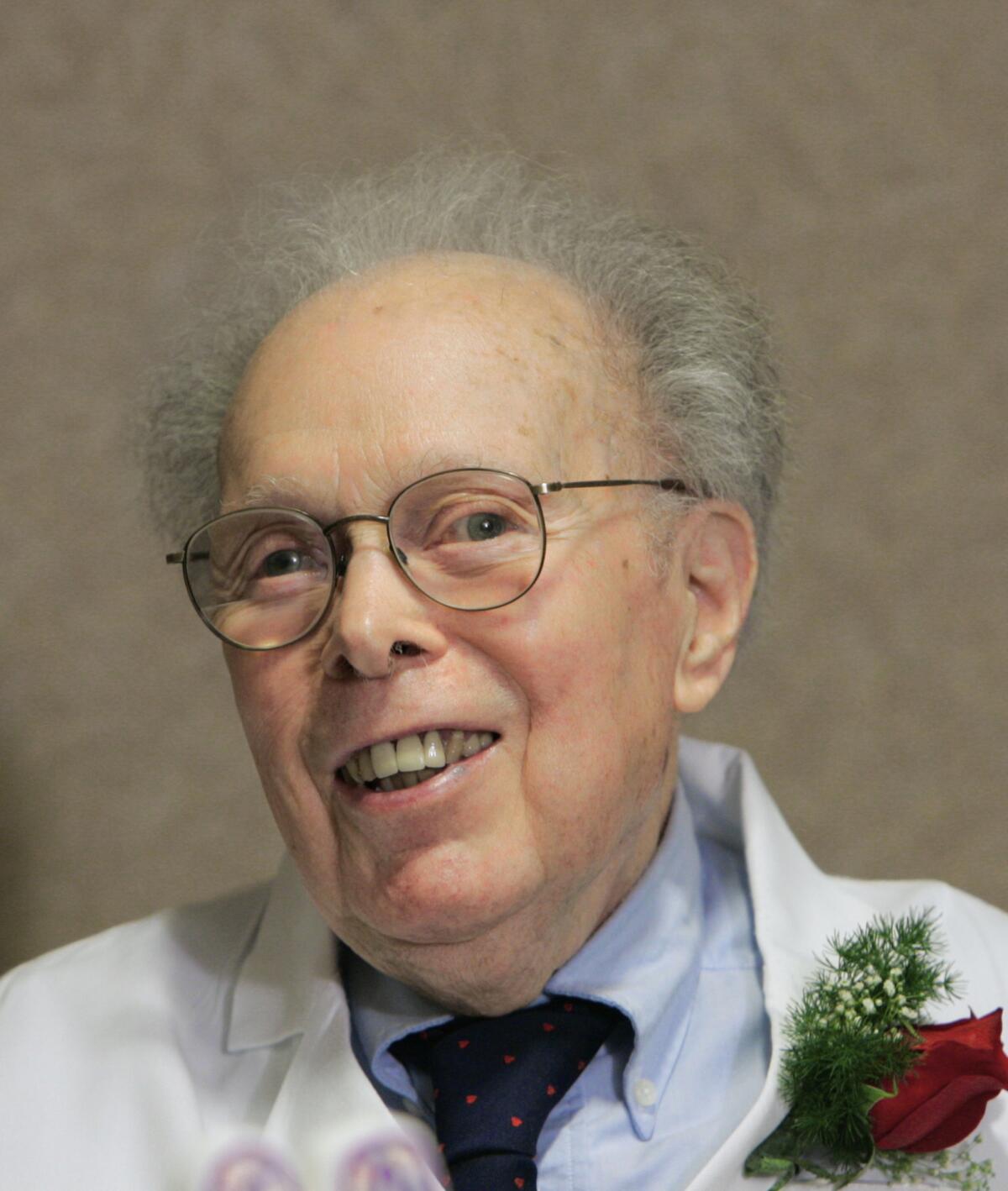Dr. Denham Harman, pioneer of research on aging, dies at 98

- Share via
Dr. Denham Harman, a renowned scientist who developed a prominent theory on aging that’s now used to study cancer, Alzheimer’s disease and other illnesses, has died in Nebraska. He was 98.
Harman, who worked into his mid-90s at the University of Nebraska Medical Center, died Tuesday after a brief illness at a hospital in Omaha, medical center spokesman Tom O’Connor said.
Harman developed the “Free Radical Theory of Aging” in 1954, though it took years for additional research to prove its importance. The theory holds that one of the byproducts of oxygen utilization is adverse chemical reactions in cells, which result in aging and, ultimately, death.
The medical community initially scoffed at the theory proposed by Harman, who also contributed to nearly three dozen patents between earning his doctorate in chemistry at UC Berkeley in 1943 and his medical degree from Stanford in 1954.
But by the 1980s, free radicals had become part of research into cancer, cardiovascular disease and strokes. Free radicals have since been linked to Alzheimer’s disease.
Harvard Medical School professor David Sinclair said Harman’s research inspired thousands of young scientists, including himself, to work on aging research.
“Dr. Harman is one of the most influential scientists of the past 50 years, bringing world-class science to what was once a backwater of biology,” Sinclair said this week, adding that Harman’s theory “is a cornerstone of the aging field.”
Harman believed that the aging process could be slowed by reducing the production of free radicals with a healthy diet, regular exercise and taking certain vitamins. He also recommended not smoking and limiting drinking alcohol.
Although he officially retired in 1986, he continued for more than another decade doing research at the University of Nebraska Medical Center – where he worked for 52 years -- before again retiring in 2010.
The director of the National Institute on Aging, Dr. Richard Hodes, said this week that Harman was a pioneer of research on aging.
“The free radical hypothesis has been a central element of the field ever since Dr. Harman’s landmark paper,” Hodes said. “Beyond his own work and continued exploration of the free radical hypothesis, Dr. Harman’s contribution to science has helped lay the foundation for important, related areas of inquiry such as the mitochondrial and DNA damage hypotheses.”
Harman developed his theory of free radicals while working as a research fellow at Berkeley, where he had also earned his undergraduate degree in chemistry in 1940.
He was born Feb. 14, 1916, in San Francisco. He got a job as a laboratory assistant at Shell Oil’s research facility in Northern California as a teenager and continued working there through his years attending Berkeley.
In 1970 Harman helped create the American Aging Assn. trade group, to promote scientific research on aging.
Harman’s theory remains influential in the field even though later research identified other contributors to aging, said Steven Austad, who leads the biology department at the University of Alabama-Birmingham and focuses on aging research.
“That one big idea he had basically stimulated 60 years of research,” Austad said.
Harman’s survivors include his wife, Helen; three sons, a daughter, four grandchildren and his sister, Marjorie.
Funk writes for the Associated Press.
More to Read
Start your day right
Sign up for Essential California for the L.A. Times biggest news, features and recommendations in your inbox six days a week.
You may occasionally receive promotional content from the Los Angeles Times.




